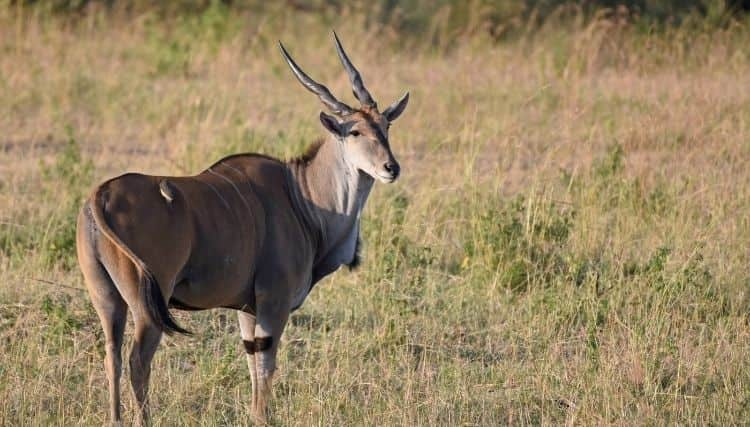
f you’ve ever wanted to know all there is to know about Common Eland Antilope, then this guide is for you.
What is Common Eland Antilope?
The Common Eland Antelope, also known as the Southern or African Eland, is a species of large antelope found in savannah and grassland habitats throughout sub-Saharan Africa. They are the second-largest antelope species following the Giant Eland.
Common Elands have a distinctive tan or chestnut coat with white stripes on their sides and a dewlap hanging from their necks. Both males and females grow long, spiral horns that can reach up to four feet in length. They are herbivores, feeding mainly on leaves, shoots, and grasses.
These antelopes live in herds of up to 500 individuals and are known for their impressive jumping abilities; they can leap over eight-foot fences effortlessly.
What is Common Eland Antilope Size?
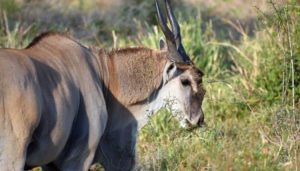
The Common Eland (Taurotragus oryx) is a large antelope species, and its size can vary depending on factors such as age, sex, and geographic location. Here are some general size measurements for Common Elands:
-
Shoulder Height: Common Elands typically have a shoulder height ranging from 1.6 to 1.9 meters (5.2 to 6.2 feet). Adult males tend to be slightly taller than females.
-
Weight: The weight of Common Elands can vary significantly. Adult males can weigh between 400 to 1,000 kilograms (880 to 2,200 pounds), while adult females generally weigh between 300 to 600 kilograms (660 to 1,320 pounds).
-
Horn Length: Both male and female Common Elands have long, spiral-shaped horns. The length of the horns can reach up to 65 centimeters (26 inches) in mature individuals. The horns are slightly longer and thicker in males compared to females.
It’s important to note that these measurements are approximate and can vary among individuals and populations. Common Elands are known for their robust build, making them one of the largest antelope species in the world.
Where Are Common Eland Antilope Found?
Common Eland (Taurotragus oryx) is native to various regions of Eastern and Southern Africa. They can be found in several countries across the continent. Here are some of the countries where Common Eland populations are present:
-
South Africa: Common Elands are found in different parts of South Africa, including national parks and game reserves such as Kruger National Park, Kgalagadi Transfrontier Park, and Hluhluwe-Imfolozi Park.
-
Namibia: They can be found in various regions of Namibia, including Etosha National Park, Waterberg Plateau Park, and the Caprivi Strip.
-
Botswana: Common Elands inhabit areas of Botswana, particularly in the northern parts of the country, including Chobe National Park and Okavango Delta.
-
Zimbabwe: They are found in different regions of Zimbabwe, including Hwange National Park, Matobo National Park, and Gonarezhou National Park.
-
Tanzania: Common Elands can be found in various areas of Tanzania, including Serengeti National Park, Ngorongoro Conservation Area, and Selous Game Reserve.
-
Kenya: They are present in parts of Kenya, such as Maasai Mara National Reserve, Amboseli National Park, and Tsavo National Park.
-
Zambia: Common Elands can be found in some regions of Zambia, including South Luangwa National Park and Kafue National Park.
These are just a few examples, and Common Elands can also be found in other neighboring countries in Eastern and Southern Africa. They typically inhabit open grasslands, savannas, woodlands, and mountainous regions, adapting to a range of environments with access to suitable vegetation and water sources.
What is the Common Eland Antilope habitat?
The Common Eland (Taurotragus oryx) inhabits a variety of habitats across its range in Eastern and Southern Africa. Here are some common habitats where Common Elands are found:
-
Grasslands: They are well adapted to open grasslands and can be found in both short grasslands and tall grass savannas. These habitats provide them with ample grazing opportunities.
-
Woodlands: Common Elands can also be found in woodland areas, including miombo woodlands, acacia woodlands, and mixed deciduous woodlands. They are capable of utilizing browse vegetation in addition to grasses.
-
Savannas: They are often found in savanna ecosystems, which consist of a mix of grasses and scattered trees. Savannas provide a balance of grazing and browsing resources.
-
Mountains: Common Elands can inhabit mountainous regions, including the foothills and slopes of mountains. They are known to occur in areas with varying elevations.
-
Riparian Zones: In some areas, Common Elands can be found near rivers, streams, and other water bodies. These riparian zones provide them with access to water and lush vegetation.
It’s important to note that Common Elands are adaptable and can occupy a range of habitats, as long as there is a sufficient supply of food, water, and suitable cover. They can adjust their feeding habits based on the available vegetation and can cope with seasonal fluctuations in rainfall and temperature.
The habitat preferences of Common Elands may vary slightly across their range, but they generally inhabit areas with a mix of grasses, browse, and water sources, allowing them to meet their dietary and hydration needs.
What is The Physical Description Of a Common Eland Antilope?
The Common Eland (Taurotragus oryx) has a distinct physical appearance that sets it apart from other antelope species. Here is a description of its physical features:
-
Size: Common Elands are among the largest antelope species. They have a shoulder height ranging from 1.6 to 1.9 meters (5.2 to 6.2 feet). Adult males are generally slightly taller and heavier than females.
-
Body Shape: Elands have a robust and muscular build. They have thick necks and deep, barrel-shaped chests. Their body is supported by sturdy legs.
-
Coat: The coat of a Common Eland is light brown to grayish, which provides effective camouflage in their natural habitats. The coat is generally smooth and short-haired.
-
White Stripes: The sides of the Common Eland are marked by distinctive vertical white stripes. These stripes contrast against the overall coloration of their coat.
-
Dewlap: Both male and female Elands possess a pendulous flap of skin called a dewlap, which hangs from the throat region. The dewlap is more prominent in males and serves as a visual display during courtship and dominance interactions.
-
Horns: Both sexes of Common Elands have long, spiral-shaped horns. The horns are ridged and can reach lengths of up to 65 centimeters (26 inches) in mature individuals. The horns are slightly longer and thicker in males than in females.
-
Facial Features: They have a broad and slightly elongated face. Their eyes are large and positioned laterally, providing them with a wide field of vision.
These physical characteristics contribute to the impressive stature and appearance of the Common Eland, making it an easily recognizable and iconic species in the African savannas and grasslands.
Common Eland Antilope Reproduction -Breeding
The Common Eland (Taurotragus oryx) follows a pattern of breeding and reproduction that includes certain distinctive features. Here’s an overview of their reproductive behavior:
-
Breeding Season: Common Elands do not have a specific breeding season. Instead, mating can occur throughout the year. However, there may be peak periods of mating activity within certain populations.
-
Social Structure: Common Elands exhibit a polygynous mating system, where a dominant male mates with multiple females. During the breeding season, dominant males establish territories and actively defend themselves against rival males.
-
Courtship and Mating: When a male is ready to mate, he engages in courtship behaviors to attract females. These behaviors may include parallel walks, displays of head and neck postures, and vocalizations such as grunts and clicks. If a female is receptive, she will allow the male to mount and mate with her.
-
Gestation and Birth: The gestation period for Common Elands is approximately 8 to 9 months. After the gestation period, a single calf, rarely twins, is born. The female typically seeks out a secluded area for giving birth. The calf is born precocial, which means it is relatively developed and able to stand and walk shortly after birth.
-
Parental Care: Female Common Elands provide most of the parental care for their calves. The calf remains close to its mother, who nurses and protects it. The calf starts to eat solid food after a few weeks but continues to nurse for several months. The bond between the mother and calf is strong.
-
Sexual Maturity: Sexual maturity is reached at different ages depending on gender. Females usually reach sexual maturity around 2 to 3 years of age, while males may not reach maturity until they are 4 to 5 years old.
-
Longevity: Common Elands have a relatively long lifespan, with individuals in the wild living up to 15 to 20 years, and occasionally longer in captivity.
It’s worth noting that the exact details of Common Eland breeding behavior can vary slightly depending on factors such as population density, habitat conditions, and social dynamics within a specific area.
How Long Does A Common Eland Antilope Live?
Common Elands (Taurotragus oryx) have a relatively long lifespan compared to many other antelope species. In the wild, the average lifespan of Common Elands is around 15 to 20 years. However, some individuals have been known to live longer, with maximum recorded lifespans of up to 25 years or more.
It’s important to note that the lifespan of Common Elands can be influenced by various factors, including predation, disease, habitat conditions, availability of resources, and human activities such as hunting and habitat destruction. In protected areas with lower levels of predation and human disturbance, Common Elands may have a higher chance of reaching their maximum lifespan.
In captivity, where they are provided with proper care, nutrition, and veterinary attention, Common Elands can live even longer. In zoos and wildlife reserves, it is not uncommon for Common Elands to reach ages 20 to 25 years or more.
It’s worth mentioning that individual variation in lifespan can occur, and factors such as genetics, health, and environmental conditions can also influence the longevity of an individual Common Eland.
Common Eland Antilope Communication And Perception
Common Elands (Taurotragus oryx) employ various forms of communication and possess keen sensory perception to interact with their environment and herd members. Here are some aspects of their communication and perception:
-
Vocalizations: Elands produce a range of vocalizations for communication, including grunts, clicks, and snorts. These vocalizations are used to convey messages to other individuals in their herd, alerting them to potential threats or indicating their presence.
-
Visual Signals: Common Elands use visual cues to communicate with one another. Dominant males may engage in visual displays of head and neck postures to assert their dominance or attract mates. They can also use their large, laterally positioned eyes to monitor their surroundings and detect potential predators.
-
Body Language: Elands communicate through body language, employing various postures and movements. For example, when threatened, they may stand tall and upright, displaying their size to intimidate predators. They can also lower their heads and position their horns defensively during aggressive encounters with other individuals.
-
Scent Marking: Elands have specialized glands on their legs that secrete a strong-smelling substance. By rubbing their legs against trees or vegetation, they leave scent marks as a means of territorial marking and communication with other herd members.
-
Infrasound Communication: Elands are known to produce low-frequency sounds below the range of human hearing, called infrasounds. These infrasounds can travel long distances and are believed to be used for long-range communication between individuals or herds.
-
Sensory Perception: Common Elands have well-developed senses to perceive their environment. Their large, laterally positioned eyes provide them with a wide field of vision, allowing them to detect movement and potential threats from different angles. They also have keen hearing and a well-developed sense of smell, which helps them detect predators and communicate with other individuals.
These communication and sensory abilities play a vital role in maintaining social cohesion, identifying threats, and establishing dominance within the herd. By employing a combination of vocalizations, visual signals, body language, and scent marking, Common Elands can effectively communicate with each other in their natural habitats.
What Does Common Eland Antilope Eat?
Common Elands (Taurotragus oryx) are herbivores and primarily feed on vegetation. Their diet consists mainly of grasses, but they are also capable of browsing on leaves, shoots, and fruits. Here are some key points about their feeding habits:
-
Grasses: Grass forms the bulk of the Common Eland’s diet. They consume a variety of grass species, including both short and tall grasses found in their habitats. Elands are adapted to grazing and have specialized digestive systems to process fibrous plant material.
-
Browse: In addition to grasses, Common Elands also feed on browse vegetation. They browse on leaves, shoots, twigs, and branches of shrubs and trees. This provides them with additional nutrients and variety in their diet.
-
Adaptability: Common Elands are highly adaptable feeders and can adjust their diet based on the availability of vegetation in their habitat. They are known to switch between grazing and browsing depending on the season and local conditions.
-
Water Dependency: While they can obtain a significant amount of moisture from the vegetation they consume, Common Elands also have a dependency on water sources. They need access to drinking water regularly to meet their hydration needs.
-
Selective Feeding: Elands can selectively feed on certain plant parts, choosing the most nutritious parts while avoiding thorny or unpalatable vegetation. This selectivity allows them to maximize their intake of essential nutrients.
-
Coping with Limited Resources: Common Elands are well-adapted to habitats with seasonal fluctuations in rainfall and vegetation availability. They can tolerate lower-quality forage during dry periods and make efficient use of the resources in their environment.
Overall, the diet of Common Elands is primarily composed of grasses, supplemented with browse vegetation. Their ability to utilize a variety of plant materials and adapt to changing conditions contributes to their success as grazers and browsers in African grasslands, savannas, and woodlands.
What is Common Eland Antilope Role İn The Ecosystem?
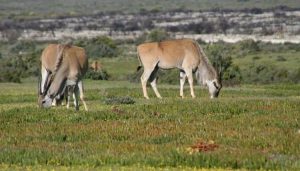
The Common Eland (Taurotragus oryx) plays several important roles in the ecosystems where it resides. Here are some of the key ecological contributions of the Common Eland:
-
Grazing and Browsing: As a herbivore, the Common Eland helps shape vegetation dynamics in its habitat. By grazing on grasses and browsing on leaves and shoots, they influence plant growth, nutrient cycling, and plant community composition. Their feeding behavior can impact vegetation structure and create a mosaic of different plant heights and densities.
-
Seed Dispersal: Common Elands contribute to seed dispersal by consuming fruits and seeds from various plants. As they move across the landscape and defecate, they disperse seeds to different areas. This aids in the dispersal and colonization of plant species, contributing to plant diversity and regeneration in the ecosystem.
-
Nutrient Cycling: Elands help facilitate nutrient cycling in their ecosystems. Through their grazing and browsing activities, they contribute to nutrient transfer from vegetation to the soil through their droppings. The nutrients contained in their feces enrich the soil, promoting plant growth and nutrient availability for other organisms.
-
Prey for Predators: Common Elands serve as an important prey species for large predators in their ecosystems. Lions, hyenas, leopards, and African wild dogs are among the predators that hunt Elands. Their presence in the ecosystem supports predator populations, helping to maintain the balance of predator-prey interactions.
-
Habitat Modification: Elands can impact the physical structure of their habitat through their feeding and movement patterns. Their grazing and browsing behaviors can influence vegetation density, which in turn affects the availability of food and cover for other herbivores, small mammals, and birds.
-
Cultural and Economic Importance: Common Elands have cultural and economic significance for local communities. They are valued for their meat, hides, and horns, which are utilized for food, traditional ceremonies, and crafts. Sustainable hunting and ecotourism centered around Eland populations can contribute to local economies and conservation efforts.
The presence of Common Elands in ecosystems helps maintain biodiversity, nutrient cycling, and predator-prey dynamics. Their ecological role as herbivores influences vegetation structure and provides resources for other organisms, contributing to the overall health and functioning of their respective habitats.
Common Eland Antilope Conservation Status
The conservation status of the Common Eland (Taurotragus oryx) is currently assessed as “Least Concern” by the International Union for Conservation of Nature (IUCN). This classification indicates that the species is not considered to be facing imminent threats to its survival. However, it is important to monitor and manage Common Eland populations to ensure their long-term viability. Here are some factors related to their conservation status:
-
Wide Distribution: Common Elands have a broad distribution across Eastern and Southern Africa, inhabiting multiple countries. This wide range provides some level of resilience to the species and reduces the risk of localized extinctions.
-
Adaptability: Common Elands are highly adaptable to different habitat types and can thrive in a variety of environments, including grasslands, savannas, woodlands, and mountains. Their ability to utilize a range of vegetation and cope with seasonal variations contributes to their resilience.
-
Protected Areas: Many Common Eland populations occur within protected areas such as national parks, game reserves, and conservation areas. These protected areas offer legal protection and management measures to safeguard the species and their habitats.
-
Hunting and Poaching: While hunting for subsistence and trophy purposes occurs, regulated hunting practices can contribute to conservation efforts by providing incentives for sustainable land and wildlife management. However, uncontrolled and illegal hunting, as well as poaching for bushmeat and the illegal wildlife trade, remain threats to Common Eland populations in some regions.
-
Human-Wildlife Conflict: Common Elands can sometimes come into conflict with human activities, particularly in areas where their habitat overlaps with agricultural lands or livestock grazing areas. Encroachment on their habitat, competition for resources, and potential disease transmission from domestic livestock are concerns that need to be managed to minimize conflict.
-
Monitoring and Conservation Efforts: Ongoing monitoring and research are essential for understanding population trends, threats, and conservation needs of Common Elands. Conservation organizations and local governments work together to implement conservation measures, protect key habitats, and promote sustainable land use practices.
While the current conservation status of the Common Eland is relatively stable, continued efforts are necessary to ensure the long-term conservation of the species. Conservation initiatives should focus on habitat protection, sustainable hunting practices, reducing human-wildlife conflict, and combating illegal activities that pose risks to the population.
How Many Common Eland Antilope Are Left İn The World?
There are estimated to be 136,000-150,000 common elands left in the world.
How Fast a Common Eland Antilope Run?
The Common Eland (Taurotragus oryx) is known for its impressive speed and agility, despite its large size. When they need to escape from predators or during territorial disputes, Elands can achieve remarkable running speeds. Here are some details about their running abilities:
-
Running Speed: Common Elands are capable of running at speeds of up to 40 to 45 miles per hour (64 to 72 kilometers per hour). They can maintain this pace for short distances, typically covering a few hundred meters.
-
Swift Acceleration: Elands are known for their quick acceleration when starting a sprint. They can rapidly go from a stationary position to their top running speed within a few seconds.
-
Long Strides: The long legs of the Common Eland allow for powerful and elongated strides while running. Their stride length can reach up to 7 to 8 meters (23 to 26 feet), enabling them to cover significant distances with each stride.
-
Agile Movement: Despite their size and bulk, Elands display agility and maneuverability while running. They can change direction quickly, make sharp turns, and navigate through various terrains, including uneven or dense vegetation.
It’s important to note that the running abilities of Common Elands can vary between individuals and populations. Factors such as age, health, and environmental conditions may influence their speed and agility. Additionally, Elands are more inclined to use their running abilities as a last resort, relying on other defense mechanisms such as their size, powerful horns, and herding behavior to deter predators.
Nevertheless, the Common Eland’s ability to run at high speeds plays a crucial role in evading predators and maintaining their survival in the African savannas and grasslands.
Referans: Common Eland
Is an eland an antelope?
Eland is the largest species in the Antilopinae subfamily of Bovidae.
What is unique about an eland?
The eland is a large African antelope, but they are the slowest of all antelopes. Elands can only run at a speed of 40 mph, but they have been known to jump 10 feet from a standing position. They have been known to live up to 20 years in captivity and can weigh up to 900 pounds.
Is the eland the largest antelope?
The eland is not the largest antelope. It is the second largest. The largest antelope in the world is the kudu.
How many types of eland are there?
There are two types of eland:
– Giant Eland (Taurotragus derbianus)
– Common Eland (Taurotragus oryx)
Is an eland bigger than a moose?
The moose lives in North America and the eland lives in Africa. The moose can be up to six feet tall, while the eland can be up to 10 feet tall. The moose weighs between 400-600 pounds, while the eland can weigh up to 2,000 pounds.
Where can I shoot eland?
An animal that is big and heavy-bodied like the eland needs a strong bullet. The heart-lung area or a shot from the side makes it easier to get a fatal hit.
Can eland be domesticated?
The common eland is known for its leather, meat, and milk. It is also domesticated in many areas and produces more butterfat than cow’s milk. However, its milk cannot be kept for as long since it does not need to be pasteurized.
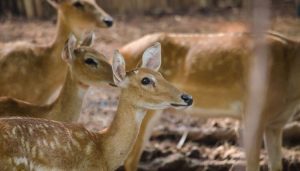
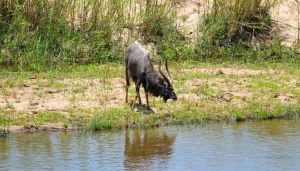
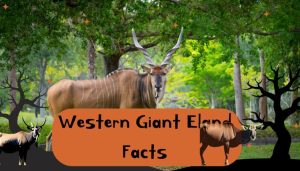
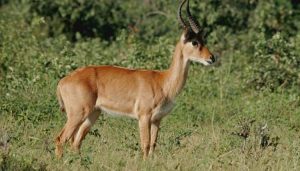
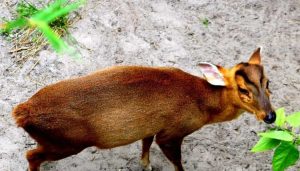
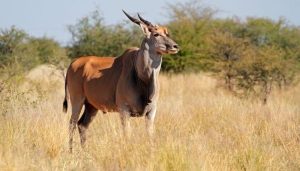
Leave a Reply